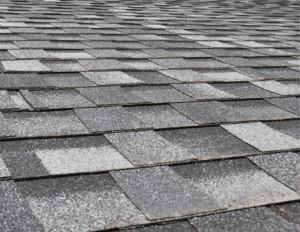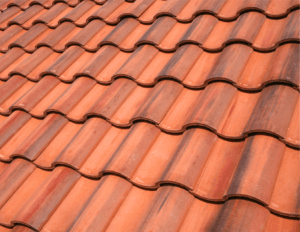One of the most critical components of any home or building is its roof. A well-maintained roof provides protection, insulation, and structural integrity. However, like any other part of a property, a roof has a limited lifespan. Understanding the factors that influence roof longevity can help homeowners make informed decisions about maintenance, repairs, and replacement. In this article, we will explore the question, “How long does a roof last?” and delve into the various factors that can impact a roof’s lifespan.
How Long Does a Roof Last by Roofing Material
The type of roofing material plays a significant role in determining how long a roof will last. Different materials have varying levels of durability and resistance to the elements. Here are some commonly used roofing materials and their approximate lifespans:
Asphalt Shingles:

Asphalt shingles are the most popular choice for residential roofs. They typically last between 15 to 30 years, depending on factors such as climate, quality of installation, and maintenance.
Metal Roofing:

Metal roofs are known for their longevity and durability. With proper installation and maintenance, a metal roof can last anywhere from 40 to 70 years or more.
Clay or Concrete Tiles:

Tile roofs are renowned for their aesthetic appeal and longevity. Clay or concrete tiles can last anywhere from 50 to 100 years with proper care.
Slate Roofing:

Slate roofs are incredibly durable and can withstand the test of time. A well-maintained slate roof can last 75 years or more.
Factors That Affect How Long a Roof Lasts
Climate and Weather Conditions:
The climate and weather conditions in your area can significantly impact the lifespan of your roof. Extreme heat, freezing temperatures, high winds, heavy rainfall, and hailstorms can all take a toll on roofing materials. For example, hot climates can cause asphalt shingles to deteriorate faster, while constant exposure to moisture can lead to mold, rot, and other issues. It’s essential to choose a roofing material that can withstand the specific weather conditions in your region.
Installation Quality:
The quality of the roof installation is crucial in determining how long it will last. A poorly installed roof may develop issues such as leaks, loose shingles, or improper flashing, which can shorten its lifespan. It’s essential to hire experienced and reputable roofing professionals to ensure proper installation.
Maintenance and Upkeep:
Regular maintenance and proactive care can significantly extend the lifespan of a roof. Routine inspections, cleaning debris, clearing gutters, and addressing minor repairs promptly can prevent small issues from escalating into significant problems. Additionally, proper ventilation and insulation can help regulate the temperature and moisture levels in the attic, reducing the strain on the roof.
Roof Pitch and Design:
The pitch or slope of the roof can impact its longevity. Steeper roofs tend to have better water runoff, reducing the chances of water pooling and leaks. Additionally, the design and architecture of the roof can affect its vulnerability to wind damage. Consulting with a professional can help determine the appropriate pitch and design for your specific location and weather conditions.
Roof Ventilation:
Proper ventilation is vital for the longevity of a roof. Adequate airflow helps prevent the buildup of excess heat and moisture in the attic, which can lead to various issues. Excessive heat can cause the roofing materials to deteriorate faster, while trapped moisture can promote the growth of mold, mildew, and rot. A well-ventilated roof allows for efficient air circulation, reducing the risk of damage and extending the roof’s lifespan.
Tree Coverage and Debris:
The presence of overhanging trees and the accumulation of debris on the roof can impact its lifespan. Falling branches, leaves, and other debris can cause physical damage to the roofing materials, leading to leaks and other issues. Additionally, excessive shade from trees can prevent the roof from drying out properly after rain, creating a conducive environment for mold and moss growth. Regularly trimming trees and clearing debris can help protect the roof from potential damage and prolong its lifespan.
Foot Traffic and Maintenance Activities:
Excessive foot traffic on the roof or improper handling during maintenance activities can cause damage to the roofing materials. Walking on the roof can loosen or crack shingles, dislodge tiles, or damage the underlying structure. It’s crucial to limit foot traffic on the roof and hire professionals who are experienced in navigating and working on rooftops to minimize the risk of damage.
Roof Color:
Believe it or not, the color of your roof can impact its lifespan. Light-colored roofs tend to reflect sunlight and heat, reducing the strain on the roofing materials. This can help prevent premature aging and degradation. In contrast, dark-colored roofs absorb more heat, potentially accelerating the breakdown of the roofing materials over time. Considering the climate and energy efficiency goals, choosing an appropriate roof color can contribute to its longevity.
Environmental Factors:
Certain environmental factors can affect the lifespan of a roof. For instance, homes located near coastal areas may be subjected to the corrosive effects of saltwater and high winds. Similarly, properties in areas prone to wildfires may require specific fire-resistant roofing materials. Understanding the unique environmental challenges in your area and selecting appropriate roofing materials can help increase the longevity of your roof.
The lifespan of a roof is influenced by various factors, and there is no one-size-fits-all answer to the question, “How long does a roof last?” By considering factors such as roofing material, climate, installation quality, maintenance, roof design, ventilation, tree coverage, foot traffic, roof color, and environmental factors, homeowners can make informed decisions to maximize the lifespan of their roofs. Regular maintenance, timely repairs, and professional inspections can help identify and address issues before they escalate, ensuring the roof remains in good condition for many years. Remember, a well-maintained roof not only protects your property but also adds value and peace of mind to your home. If your roof is damaged and in need of a replacement contact Semper Fi Exteriors today!
